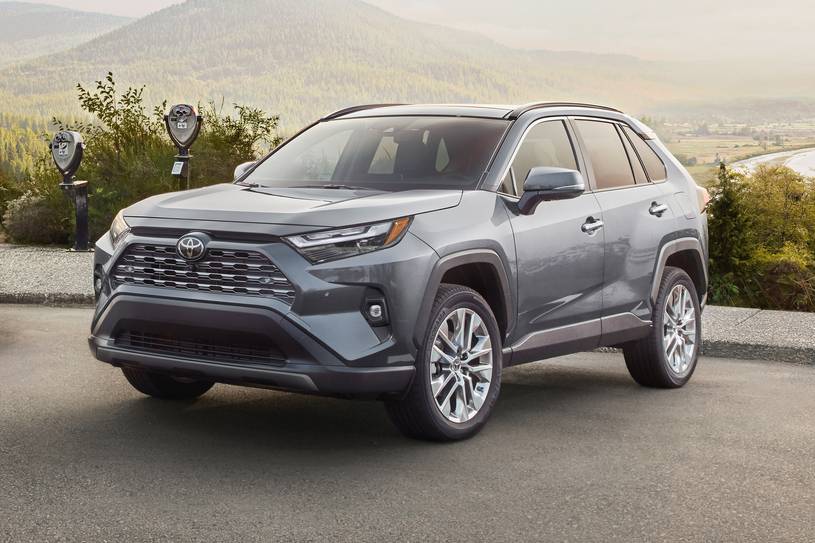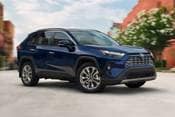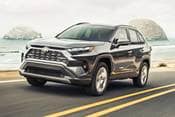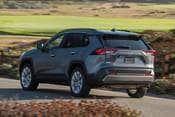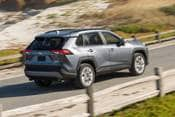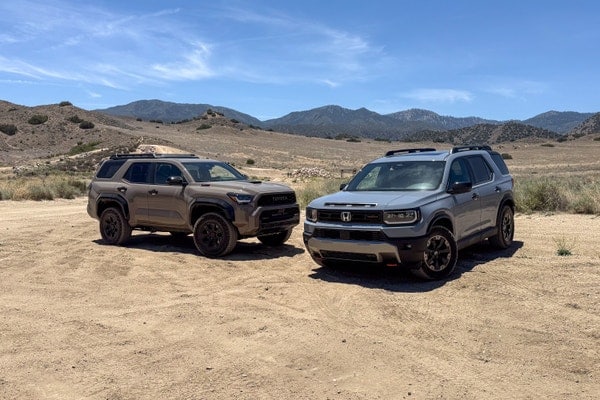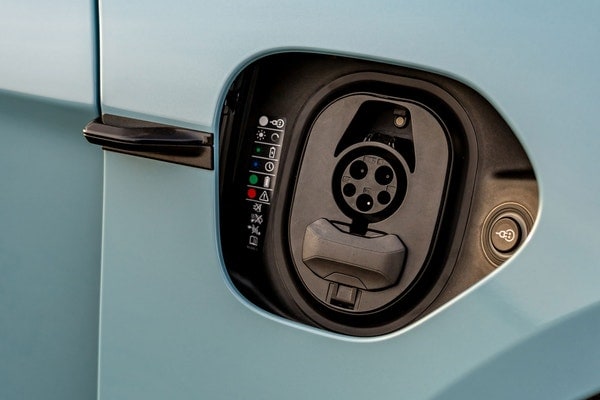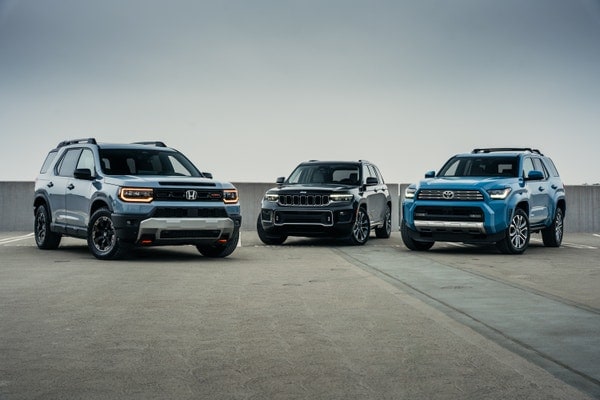2025 Toyota RAV4
Price Range: $29,550 - $39,255
Helpful shopping links
PRICE CHECKER™
Check a dealer's price
Bring back a dealer's quote, and we'll tell you if it's a good price!
Check your price quote
Price:
$ -
Graph shown is a sample only
FAQ
Is the Toyota RAV4 a good car?
The Edmunds experts tested the 2025 RAV4 both on the road and at the track, giving it a 7.7 out of 10. Edmunds’ consumer reviews show that the 2025 RAV4 gets an average rating of 4 stars out of 5 (based on 58 reviews) What about cargo capacity? When you're thinking about carrying stuff in your new car, keep in mind that carrying capacity for the RAV4 ranges from 37.5 to 37.6 cubic feet of trunk space. And then there's safety and reliability. Edmunds has all the latest NHTSA and IIHS crash-test scores, plus industry-leading expert and consumer reviews to help you understand what it's like to own and maintain a Toyota RAV4. Learn more
What's new in the 2025 Toyota RAV4?
According to Edmunds’ car experts, here’s what’s new for the 2025 Toyota RAV4:
- Adventure and TRD Off Road trims discontinued
- Part of the fifth Toyota RAV4 generation introduced for 2019
Is the Toyota RAV4 reliable?
To determine whether the Toyota RAV4 is reliable, read Edmunds' authentic consumer reviews, which come from real owners and reveal what it's like to live with the RAV4. Look for specific complaints that keep popping up in the reviews, and be sure to compare the RAV4's 4-star average consumer rating to that of competing vehicles. Learn more
Is the 2025 Toyota RAV4 a good car?
There's a lot to consider if you're wondering whether the 2025 Toyota RAV4 is a good car. Edmunds' expert testing team reviewed the 2025 RAV4 and gave it a 7.7 out of 10. Our consumer reviews show that the 2025 RAV4 gets an average rating of 4 stars out of 5 (based on 58 reviews). Safety scores, fuel economy, cargo capacity and feature availability should all be factors in determining whether the 2025 RAV4 is a good car for you. Learn more
How much should I pay for a 2025 Toyota RAV4?
The least-expensive 2025 Toyota RAV4 is the 2025 Toyota RAV4 LE 4dr SUV (2.5L 4cyl 8A). Including destination charge, it arrives with a Manufacturer's Suggested Retail Price (MSRP) of about $29,550.
Other versions include:
- LE 4dr SUV (2.5L 4cyl 8A) which starts at $29,550
- LE 4dr SUV AWD (2.5L 4cyl 8A) which starts at $30,950
- XLE 4dr SUV (2.5L 4cyl 8A) which starts at $31,060
- XLE 4dr SUV AWD (2.5L 4cyl 8A) which starts at $32,460
- XLE Premium 4dr SUV (2.5L 4cyl 8A) which starts at $33,950
- XLE Premium 4dr SUV AWD (2.5L 4cyl 8A) which starts at $35,350
- Limited 4dr SUV (2.5L 4cyl 8A) which starts at $37,855
- Limited 4dr SUV AWD (2.5L 4cyl 8A) which starts at $39,255
What are the different models of Toyota RAV4?
If you're interested in the Toyota RAV4, the next question is, which RAV4 model is right for you? RAV4 variants include LE 4dr SUV (2.5L 4cyl 8A), LE 4dr SUV AWD (2.5L 4cyl 8A), XLE 4dr SUV (2.5L 4cyl 8A), and XLE 4dr SUV AWD (2.5L 4cyl 8A). For a full list of RAV4 models, check out Edmunds’ Features & Specs page. Learn more
